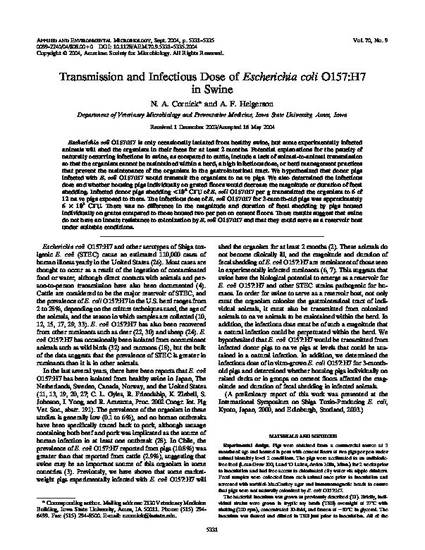
Escherichia coli O157:H7 is only occasionally isolated from healthy swine, but some experimentally infected animals will shed the organism in their feces for at least 2 months. Potential explanations for the paucity of naturally occurring infections in swine, as compared to cattle, include a lack of animal-to-animal transmission so that the organism cannot be maintained within a herd, a high infectious dose, or herd management practices that prevent the maintenance of the organism in the gastrointestinal tract. We hypothesized that donor pigs infected with E. coli O157:H7 would transmit the organism to naïve pigs. We also determined the infectious dose and whether housing pigs individually on grated floors would decrease the magnitude or duration of fecal shedding. Infected donor pigs shedding <104 CFU of E. coli O157:H7 per g transmitted the organism to 6 of 12 naïve pigs exposed to them. The infectious dose of E. coli O157:H7 for 3-month-old pigs was approximately 6 × 103 CFU. There was no difference in the magnitude and duration of fecal shedding by pigs housed individually on grates compared to those housed two per pen on cement floors. These results suggest that swine do not have an innate resistance to colonization by E. coli O157:H7 and that they could serve as a reservoir host under suitable conditions.
Available at: http://works.bepress.com/nancy-cornick/29/

This article is from Applied and Environmental Microbiology 70 (2004): 5331, doi:10.1128/AEM.70.9.5331-5335.2004. Posted with permission.